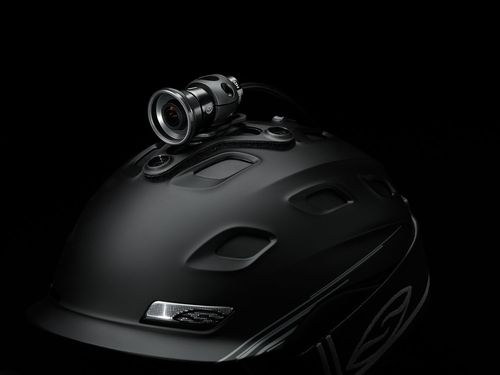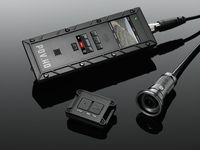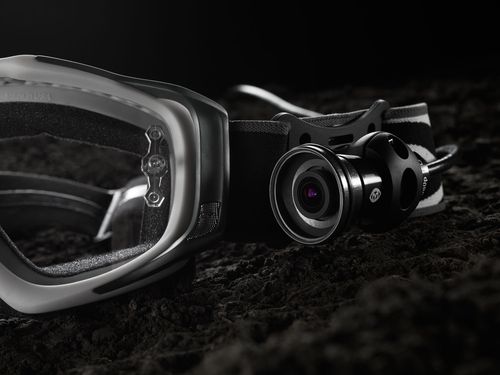
If you’re strapping a camera to your helmet or handlebars and hurtling down a mountain, you want it to be able to take a beating because, presumably, you aren’t showing your bros footie of yourself schralping the bunny slopes. The toughest POV camera we’ve seen? Hands down it’s model ($499). Want proof? wires all their athletes with V.I.O. cameras, and they, unsurprisingly, take a beating. Check out the following clip from TGR’s 2010/2011 offering, Light the Wick, on tour now, including V.I.O.-shot footage of Daron Rahlves getting rag dolled and Lynsey Dyer being dug out of avalanche debris.
from on .
The secret to the V.I.O.’s durability?

The electronics are largely housed in a separate body from the lens, and connected by a 5-foot long cable. So even if your noggin bounces off of a few rocks, the recorded image should stay pretty steady. The other advantage to this set-up is that it keeps the camera head small. Weighing just 2 ounces and being little more than thumb-sized, the camera head is low profile and inconspicuous (V.I.O.’s largest clientele include the military and law enforcement). The recording body is long and thin, slipping easily into an overstuffed hydration pack or even an interior parka pocket. What’s more, the whole rig is waterproof to one meter. As in, drop it right in the lake and it’ll still record. Kayakers and kite-boarders take note.

What about the footage? The POV 1.5, shoots in 720 vertical pixels with a 110-degree field of view. Again, if it’s good enough for TGR, it’s probably good enough for you. Even better, the 1.5 is being replaced in November by their HD model ($599), which will gather data in 1080 vertical pixels and boasts a 142-degree field of vision—the widest point-of-view camera angle available on the market. The camera head also features a high-quality 6-element glass lens and a native 1080p CMOS sensor, meaning that video is received and recorded in true High-Definition without additional manipulation or “up-scaling.” Both cameras record up to 5 hours of footage onto an SD card using two AA batteries.
I tested the 1.5 model in September on Jackson Hole’s newest singletrack, the Philips Ridge Trail, just completed this summer.
There are other point-of-view cameras that record in 1080 on the market, but which cost a few hundred less. Is it worth it? That depends on your budget. The V.I.O. models come with a few things their competitors don’t offer. There is a remote start/stop button that can be affixed to your pack shoulder strap (or wherever) that allows you to easily save disc space on the fly. Furthermore, with the body’s 2-inch playback screen, you can easily see whether or not you got the shot, and whether or not you have to hike back up hill to stick that jump again or not. Could be a lifesaver.
—